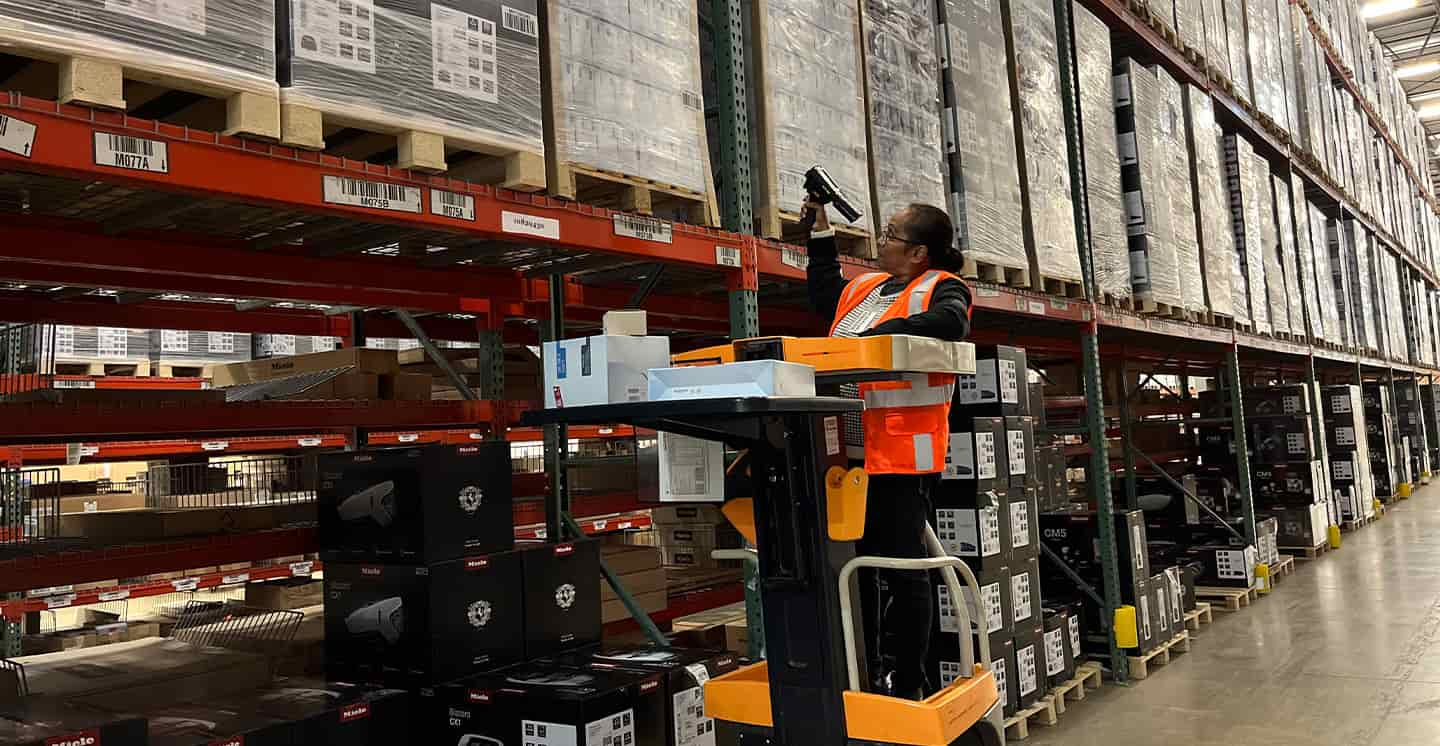Today’s retail industry moves fast, and customer expectations move faster. Whether your brand sells through retail partners, online marketplaces, or direct-to-consumer channels, one thing remains constant: the need for a supply chain that works as hard as you do.
Efficient retail logistics and scalable warehousing have become the foundation of profitability, customer satisfaction, and long-term growth. Without systems designed to manage fluctuating demand, high SKU counts, and tight delivery schedules, even the best products risk sitting on the shelf — or worse, disappointing customers.
At CDS, we work alongside retail brands to help them manage those challenges with proven warehousing and retail fulfillment services designed to keep products flowing, costs contained, and customers happy.
Why Efficiency and Scalability Are Non-Negotiable in Retail Warehousing
Efficiency in retail logistics isn’t just about speed — it’s about doing more with less. It’s the ability to:
-
Reduce storage and handling costs
-
Improve order accuracy
-
Avoid stockouts and overstock situations
-
Maintain reliable delivery schedules
When your warehousing and retail distribution run efficiently, your brand avoids costly mistakes and maintains strong customer relationships.
But efficiency alone isn’t enough. Retail success depends on the ability to scale, especially in a supply chain in the retail industry where demand fluctuates with seasons, product launches, and market trends. Without scalable retail supply chain solutions, brands risk missed sales, delayed shipments, and wasted resources during peak periods.
That’s why retailers need warehousing and distribution that adjust to their growth, with the space, staffing, and systems to manage both everyday operations and surges in demand.
Key Strategies for Achieving Scalable, Efficient Retail Logistics
Customized Warehousing for Retail Brands
Every retail business is different, from product types and packaging to order profiles and sales channels. A one-size-fits-all approach to warehousing often leads to inefficiencies, wasted space, and fulfillment errors.
Successful retail brands prioritize warehousing strategies designed around their specific product requirements, including:
- Adjustable storage configurations to accommodate different product sizes and packaging formats
- Secure areas for high-value, fragile, or compliance-sensitive inventory
- Flexible racking and storage to expand or contract with inventory levels
By aligning storage and distribution methods to the brand’s real-world needs, companies can reduce handling costs, improve space utilization, and prepare for demand changes without disruptions.
Cross-Docking and Just-in-Time (JIT) Inventory Solutions
Holding excess inventory ties up capital and takes up valuable warehouse space. Retailers looking to maintain efficiency turn to strategies like cross-docking and JIT inventory to keep stock levels lean without sacrificing delivery speed.
- Cross-Docking: Products arrive at the distribution center and are quickly transferred to outbound transportation with minimal storage time. This approach reduces warehousing costs and accelerates order fulfillment.
- JIT Inventory: Stock is replenished in small, frequent shipments based on demand forecasts, minimizing storage requirements while ensuring availability.
These models help retailers respond faster to customer orders while keeping carrying costs low, a critical factor in competitive markets.
Data-Driven Inventory Management
Managing retail inventory by guesswork is risky. Brands today rely on data to forecast demand, track stock levels, and prevent costly mistakes. A strong inventory management system helps:
- Predict seasonal or promotional demand fluctuations
- Maintain accurate stock counts across multiple locations
- Identify slow-moving products to reduce excess inventory
- Provide real-time visibility for better decision-making
Data-driven systems support efficient retail logistics by reducing stock discrepancies, preventing overordering, and enabling faster, more accurate order fulfillment.
Case Study: Reducing Warehousing Costs and Improving Efficiency Through Location Strategy
Retail businesses face constant pressure to contain costs while keeping up with fast-paced distribution demands. For many, warehousing expenses — especially near major ports — can become a significant financial strain. But with the right 3PL strategy, those challenges can be turned into opportunities for efficiency and savings.
A recent example highlights how a consumer goods company partnered with CDS to solve exactly this issue. The company, which supplies products to major home improvement retailers, was struggling with rising warehouse lease rates on the West Coast. At the same time, they were seeking to grow their business on the East Coast to better serve customer demand.
CDS worked with the company to rethink their approach:
- On the West Coast, shifting operations from the Port of Long Beach to the Port of Oakland helped the company avoid skyrocketing storage rates, saving roughly $500,000 annually.
- On the East Coast, the company switched to CDS's Richmond Hill, Georgia, facility, taking advantage of lower transportation costs and better access to major distribution routes.
This strategy allowed the company to reduce storage and shipping costs while maintaining reliable, efficient retail distribution across both coasts, without compromising service to their customers.
Want the full story? Read how this company cut costs and increased efficiency by leveraging CDS’s proximity to major transportation hubs. Download the full case study here.
Building Scalable Retail Supply Chain Solutions With CDS
Retail brands working with CDS gain access to warehousing, distribution, and fulfillment services designed to:
- Adjust with seasonal, promotional, or market-driven demand
- Maintain reliable, cost-effective order fulfillment for B2B and D2C channels
- Improve inventory accuracy and visibility across the supply chain
- Provide secure, compliant storage for a wide range of retail products
With over 1 million square feet of warehousing space and a national distribution network, CDS supports retailers at every stage of their growth journey — from emerging brands to established national players.
Preparing Your Retail Operations for What’s Next
Building a profitable, resilient retail operation depends on warehousing and retail logistics solutions that keep pace with your growth. With the right strategy, your brand can:
- Reduce waste
and storage costs - Maintain reliable delivery to retailers and customers
- Improve inventory management and forecasting
- Prepare for market shifts and seasonal peaks
CDS is here to support retail businesses with scalable, efficient fulfillment and distribution solutions designed for real-world challenges. Contact us today.
Explore More
-
Challenges and Solutions in Retail Distribution
-
Technology in Retail Distribution
-
Improving Customer Experience Through Fulfillment

